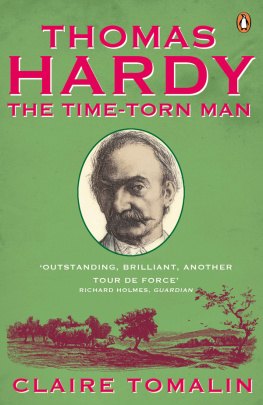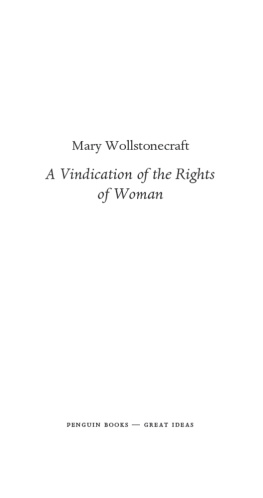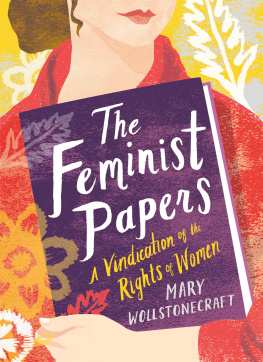An admirable biography In the hands of the author we are able to know much more about Mary Wollstonecraft than any one person did in her lifetime, and indeed more than she knew about herself The New York Times Book Review
Repeatedly one wants to shout Brava! a fine piece of work the reader is rewarded again and again Mary Ellmann in the Washington Post
Mrs Tomalin is a most intelligent and sympathetic biographer, aware of her impetuous subject's many failings, yet with the perception to present her greatness fairly. She writes well and wittily, and her treatment of the infinitely complex period of Paris during the Revolution shows a remarkable lucidity and understanding Daily Telegraph
Mrs Tomalin's account of Mary's life and times is a vivid evocation not only of what Mary went through but also of how women lived in the second part of the eighteenth century in England and France Most of all, however, she makes Mary Wollstonecraft unforgettable Mary Kenny in the Evening Standard
You have only to read Victorian biographies to realize how good our examples are. One of the best is Claire Tomalin's The Life and Death of Mary Wollstonecraft C. P. Snow in the Financial Times
Claire Tomalin has worked in publishing and journalism all her life. She was literary editor first of the New Statesman and then of the Sunday Times, which she left in 1986. She is the author of The Life and Death of Mary Wollstonecraft, which won the Whitbread First Book Prize for 1974; Shelley and His World (reissued by Penguin in 1992); Katherine Mansfield: A Secret Life (1988), a biography of the modernist writer on whom she also based her 1991 play The Winter Wife; the highly acclaimed The Invisible Woman: The Story of Nelly Ternan and Charles Dickens, which won the 1990 James Tait Black Memorial Prize for Biography, the NCR Book Award in 1991, as well as the Hawthornden Prize; Mrs Jordan's Profession (1995), a study of the Regency actress; Jane Austen: A Life (1998); a collection of her literary journalism entitled Several Strangers: Writing from Three Decades (1999); and Samuel Pepys: The Unequalled Self, which won the Whitbread Biography Award and which went on to win the Whitbread Book of the Year Award for 2002. All her books are published by Penguin.

PENGUIN BOOKS
PENGUIN BOOKS
Published by the Penguin Group
Penguin Books Ltd, 80 Strand, London WC2R 0RL, England
Penguin Putnam Inc., 375 Hudson Street, New York, New York 10014, USA
Penguin Books Australia Ltd, 250 Camberwell Road, Camberwell, Victoria 3124, Australia
Penguin Books Canada Ltd, 10 Alcorn Avenue, Toronto, Ontario, Canada M4V 3B2
Penguin Books India (P) Ltd, 11 Community Centre, Panchsheel Park, New Delhi 110 017, India
Penguin Books (NZ) Ltd, Cnr Rosedale and Airborne Roads, Albany, Auckland, New Zealand
Penguin Books (South Africa) (Pty) Ltd, Block D, Rosebank Office Park, 181 Jan Smuts Avenue, Parktown North, Gauteng 2193 , South Africa
Penguin Books Ltd, Registered Offices: 80 Strand, London WC2R 0RL, England
www.penguin.com
First published by Weidenfeld & Nicolson 1974
Published in Pelican Books (without illustrations) 1977
Reprinted in Penguin Books 1985
Reprinted with revisions, illustrations and revised notes and bibliography 1992
Copyright Claire Tomalin, 1974, 1992
Front cover: Portrait of Mary Wollstonecraft by J. Opie, reproduced by courtesy of the National Portrait Gallery. Figures: London Musee Carnavalet/ Leemage/ Lebrecht Music & Arts
All rights reserved
The moral right of the author has been asserted
ISBN: 978-0-14-191226-4
F OR N ICK
Contents
List of Illustrations
W IT in women is apt to have bad consequences; like a sword without a scabbard, it wounds the wearer and provokes assailants. I am sorry to say the generality of women who have excelled in wit have failed in chastity.
Elizabeth Montagu, 1750
The more I see of radical women, the less I desire to increase their number. I went to a Radical dinner party last week, and the bold, unfeeling faces of some of the ladies, and their reckless talk, quite shocked me.
Emily Davies, founder of Girton, writing to Barbara Bodichon in 1867
Up to the beginning of the nineteenth century the distinguished woman had almost invariably been an aristocrat. It was the great lady who ruled and wrote letters and influenced the course of politics. From the huge middle class few women rose to eminence, nor has the drabness of their lot received the attention which had been bestowed upon the splendours of the great and the miseries of the poor. There they remain, even in the early part of the nineteenth century, a vast body, living, marrying, bearing children in dull obscurity, until at last we begin to wonder whether there was something in their condition itself in the age at which they married, the number of children they bore, the privacy they lacked, the incomes they had not, the conventions which stifled them, and the education they never received which so affected them that, though the middle class is the great reservoir from which we draw our distinguished men, it has thrown up singularly few women to set beside them.
Virginia Woolf, 1927
Free thought has always been the perquisite of the aristocracy. So has the intellectual development of women.
Bertrand Russell writing to Gilbert Murray, 1943
Acknowledgements
I SHOULD like to acknowledge the assistance of the staff of the London Library; the GLC archivists; the Public Record Office, London; the Dr Williams Library; the Library of the Society of Friends in London; the Guildhall Library; University College Library, London; Stoke Newington Library; the Wellcome Medical Library; the British Museum; the Bodleian; the Archives de France; the department of archives, Ville du Havre; the Kunsthaus, Zrich; the Liverpool City Libraries and the Walker Art Gallery, Liverpool; the Mitchell Library, Sydney, Australia; and the county archivist of the East Riding of Yorkshire.
I am indebted to Lord Abinger for allowing me to examine microfilms of the manuscripts in his possession.
I should like to express my gratitude to Captain Douglas King-Harman for friendly assistance in looking through his family papers for me.
Bernard Mason kindly allowed me to quote from his late brother Eudo Mason's The Mind of Henry Fuseli; and the Carl Pforzheimer Library and Oxford University Press permitted quotations from Shelley and his Circle, edited by K. N. Cameron.
I am grateful to Thomas Pakenham for drawing my attention to a reference to Mary's relationship with the Kingsboroughs in the manuscript letters of Bishop Percy of Dromore, and to Professor Gert Schiff for assuring me that there is no drawing of Mary by Fuseli in existence.
I should like to acknowledge assistance and encouragement from Edward Thompson, Professor Eric Hobsbawm, Professor D. V. Glass and Professor Richard Cobb in directing my attention to various sources of information I should otherwise have missed.
The medical aspect of Mary's death was most kindly illuminated for me by David Morris, MD , FRCS , MRCOG .










